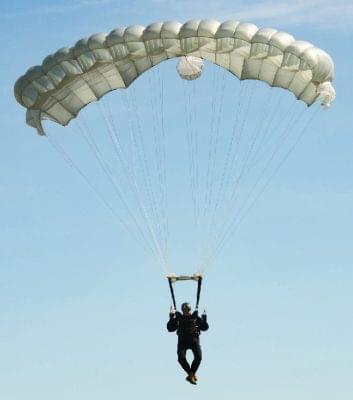Your guide to the different types of nylon ripstop fabric and its uses Singapore
Nylon ripstop fabric is an essential material in various industries, including aerospace, outdoor gear, and military applications. Its durability, lightweight properties, and resistance to tearing make it ideal for demanding environments. Whether used in parachutes, tents, backpacks, or protective clothing, nylon ripstop fabric is a go-to choice for those seeking high-performance materials.
In this guide, we explore the different types of nylon ripstop fabric Singapore, their unique features, and their applications. Understanding these fabrics will help you choose the right material for your needs, whether for commercial use, military-grade applications, or personal outdoor gear.

What is Nylon Ripstop Fabric?
Nylon ripstop fabric is a specially reinforced material designed to resist tearing and wear. It is made using a crosshatch weave pattern, where thicker threads are woven into the fabric at regular intervals. This structure strengthens the fabric, preventing minor tears from spreading.
Key Benefits:
- Lightweight & Durable: Provides excellent strength without adding unnecessary weight.
- Tear-Resistant: Designed to withstand harsh conditions.
- Water-Resistant: Some variants include coatings for enhanced water resistance.
- UV Protection: Certain ripstop fabrics are treated to resist sun damage.
Different Types of Nylon Ripstop Fabric Singapore
1. Standard Nylon Ripstop Fabric
This is the most common type of nylon ripstop fabric Singapore and is used in a variety of applications. It features a balanced mix of durability and flexibility, making it ideal for everyday outdoor gear and lightweight structures.
Common Uses:
- Parachutes: Ensures controlled descents and reliability in extreme conditions.
- Backpacks: Provides lightweight strength for carrying heavy loads.
- Tents: Offers resistance to wind and rain without adding weight.
- Kites: Used for its ability to endure strong winds.
Advantages:
- Lightweight and strong
- Budget-friendly
- Easy to sew and modify
2. Silicone-Coated Nylon Ripstop Fabric
For enhanced waterproofing and UV resistance, silicone-coated nylon ripstop fabric is an excellent choice. The addition of silicone coating on both sides makes it highly resistant to moisture and environmental wear.
Common Uses:
- Raingear: Waterproof jackets and ponchos to keep users dry.
- Tarps: Ideal for outdoor shelters and protective covers.
- Kayaks and Canoes: Used for ultralight inflatable watercraft due to its waterproof properties.
Advantages:
- Superior waterproofing
- Increased UV resistance
- Long-lasting durability
3. Dyneema Composite Fabric (DCF)
Also known as Cuben Fiber, Dyneema Composite Fabric (DCF) is one of the strongest and lightest materials available. It is made from ultra-high-molecular-weight polyethylene (UHMWPE) fibers, which offer unmatched durability and performance.
Common Uses:
- Ultralight Tents: Favored by backpackers for its strength-to-weight ratio.
- Parachutes: Used in military applications where strength and durability are crucial.
- High-Performance Backpacks: Designed for extreme outdoor conditions.
Advantages:
- Exceptionally lightweight and strong
- Resistant to moisture and chemicals
- High tear resistance
4. Polyester Ripstop Fabric
While nylon is the most common material for ripstop fabrics, polyester ripstop fabric offers some unique advantages, particularly in applications where UV resistance and color retention are critical.
Common Uses:
- Flags and Banners: Maintains color vibrancy despite sun exposure.
- Outdoor Clothing: Used in jackets and pants for extended UV protection.
- Parachutes: Sometimes preferred for training parachutes due to cost efficiency.
Advantages:
- More resistant to UV damage than nylon
- Retains color well
- Good tear resistance at a lower cost
Choosing the Right Nylon Ripstop Fabric
When selecting the best nylon ripstop fabric Singapore, consider the following factors:
- Intended Use: Different applications require different levels of strength, flexibility, and water resistance.
- Weight Considerations: Ultralight fabrics like DCF are ideal for backpacking, while silicone-coated ripstop is better for waterproof applications.
- Durability Requirements: If the fabric is for military or high-stress environments, Dyneema or silicone-coated nylon is the best choice.
- Budget: Standard nylon ripstop fabric is a cost-effective choice for general applications.
Why Aerodyne Uses Premium Nylon Ripstop Fabrics
At Aerodyne, we prioritize quality and performance in our parachutes and military-grade equipment. Our products use the highest-grade nylon ripstop fabrics to ensure durability, strength, and safety.
Our Commitment to Quality:
- Military-Grade Materials: Designed for high-performance applications.
- Strict Quality Control: Every fabric is tested to meet international safety standards.
- Cutting-Edge Innovation: We integrate the latest fabric technologies into our products.
If you’re looking for premium nylon ripstop fabric Singapore for parachutes, outdoor gear, or tactical applications, Aerodyne has the perfect solution.
Nylon ripstop fabric is a versatile, durable, and essential material used across various industries. Whether you need a waterproof, ultralight, or high-strength fabric, understanding the different types of nylon ripstop fabric Singapore can help you make the right choice.
At Aerodyne, we supply high-quality parachutes and military equipment made from the best ripstop fabrics available. If you’re looking for durable and reliable solutions, contact us today!
For inquiries, visit our Contact Us page or explore our products on our Home Page.
